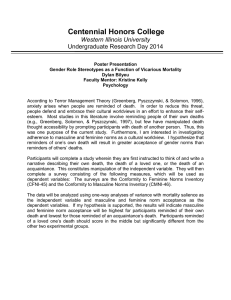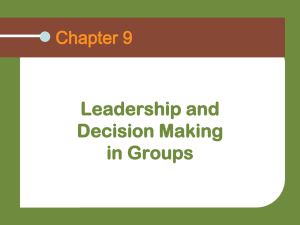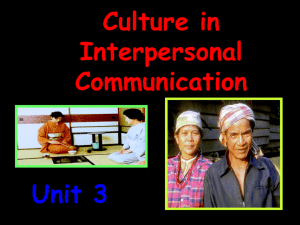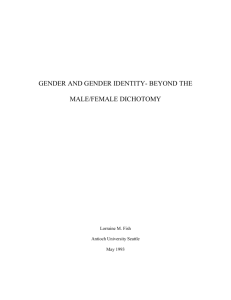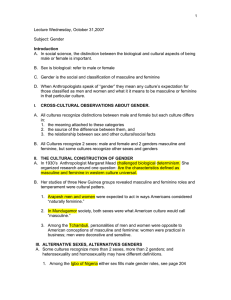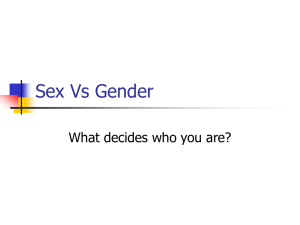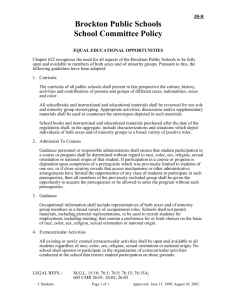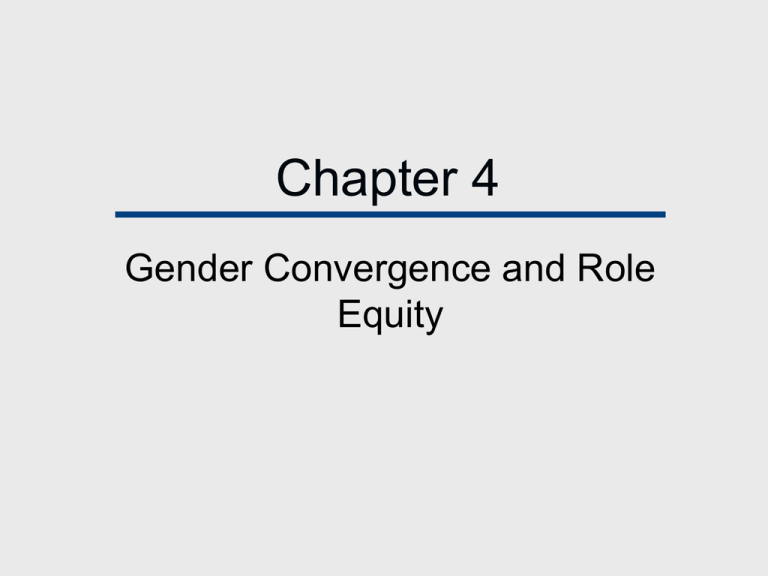
Chapter 4
Gender Convergence and Role
Equity
Chapter Outline
•
•
•
•
Male - Masculine and Female Feminine: Not Necessarily So
How Sex and Gender Identity
Develop
Role Equity
Traditional Gender Roles
Chapter Outline
Changing Male and Female Roles
Gender Role Stereotypes
The Movement toward Gender Equality
Male = Masculine and Female = Feminine:
Not Necessarily So
•
•
There is controversy about the answers to
questions about gender.
The differences between the sexes are
lessening, and the similarities are
increasing.
Gender Identity
A person’s gender identity is how that
person views him-/herself:
“Am I a man or woman, masculine or
feminine?”
Social Norms and Roles
•
•
Norms are accepted and expected
patterns of behavior and beliefs
established either formally or informally by
a group.
Roles involve activities demanded by the
norms.
How Sex and Gender Identity Develop
1.
2.
3.
Sex is genetically determined at
conception.
Hormones secreted by glands directed
by the genetic configuration produce
physical differences.
Society defines, prescribes, and
reinforces the gender-role aspect of
sexual identity.
Contributing Factors
Biological Contributions
Environmental Contributions
Gender Differences
Biological Contributions
Every human starts with the potential of
becoming either male or female.
As a fully differentiated adult each still carries
the biological rudiments of the opposite sex.
Sexuality
•
•
•
Intersexual: A person who has biological
characteristics of both sexes.
Transsexual: A person who feels
psychologically that he or she is actually
of the opposite gender.
Transvestite: A person who gains sexual
pleasure from dressing like the opposite
sex.
Environmental
Contributions
Once a baby is born, society begins
to teach the infant its proper gender
role and reinforce its sexual identity.
Normal Curves of Most
Gender Characteristics
Role Equity
When men and women are freer to choose
gender roles for themselves, especially within
intimate relationships like marriage, their
chances for success and fulfillment increase.
Role Equity
What is role equity?
• When the roles one fulfills are based on
individual strengths and weaknesses,rather
than on stereotypical differences between the
sexes.
What is androgyny?
• The blending of traits associated with the
sexes by society.
Changing Male and Female Roles
•
•
The women’s movement has focused
attention on gender inequalities and has
energized efforts to reduce these
inequalities.
As women change their roles, the
masculine role also changes.
The Movement toward Gender Equality
To say that men and women are equal in all
ways overlooks the advantageous, and
disadvantageous, differences between the
sexes.
To say that one sex is better than the other
because of those differences is stereotyping at
its worst.
Masculinity and femininity are not polar
opposites; most of us are both masculine and
feminine, depending on the situation.
Quick Quiz
1. The blending of traits associated with the
sexes is called
a)
b)
c)
d)
Androgyny
Transvestitism
Transsexualism
Intersexualism
Answer: a
•
The blending of traits associated with the
sexes is called androgyny.
2. Accepted and expected patterns of
behavior and beliefs established either
formally or informally by a group are called
a)
b)
c)
d)
Socialization
Norms
Roles
Gender
Answer: b
•
Accepted and expected patterns of
behavior and beliefs established either
formally or informally by a group are
called norms.
3. Gender Identity is
a)
b)
c)
d)
the process by which sex is determined.
the same as stereotypical gender roles.
how that person views him-/herself.
the idea that men and women are equal.
Answer: c
•
Gender identity is how that person
views him-/herself.

